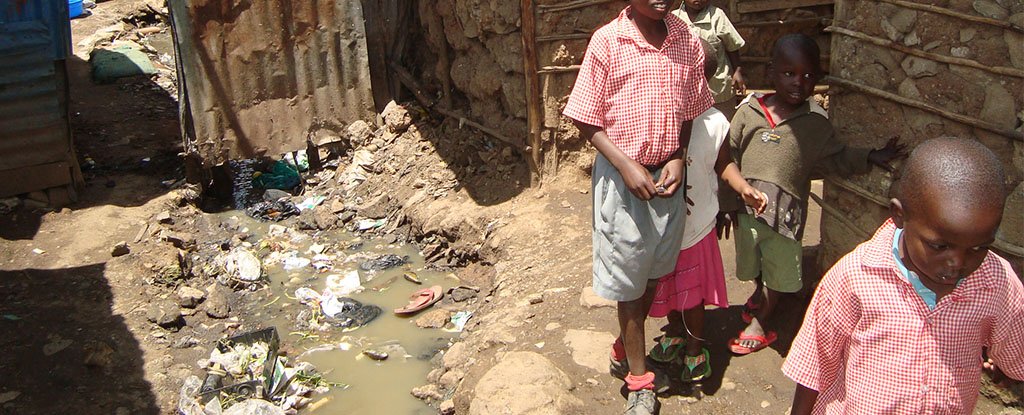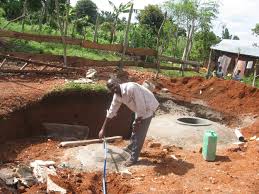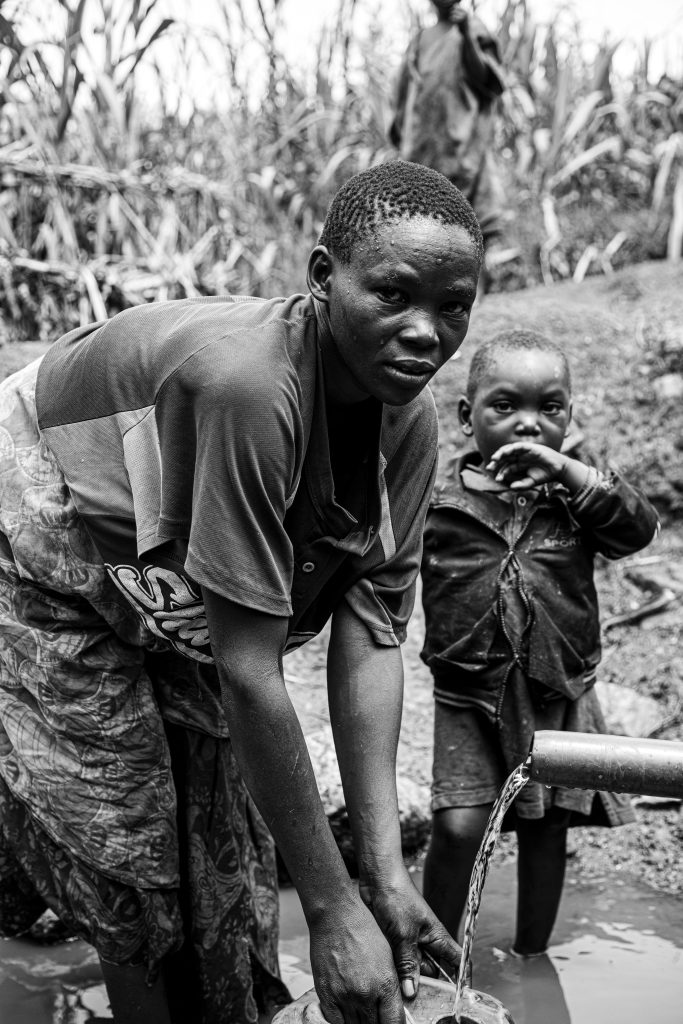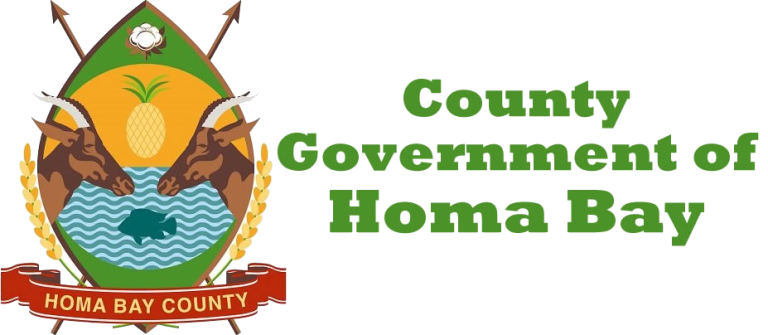The crisis of unsafe water in Kenya is not just about thirst or inconvenience. It’s about lives lost, dreams deferred and dignity denied. When families draw water from contaminated sources, they pay far more than a water bill—they pay with their health, hope and futures. In this article we’ll dig into what unsafe water really costs, why millions in Kenya still face this daily barrier, and how together we can turn the tide.
A detailed explanation of the problem
What exactly is “unsafe water in Kenya”?

When we refer to unsafe water in Kenya, we’re talking about water that fails basic safety criteria—contaminated by bacteria, viruses, chemicals or other pollutants; collected from unprotected sources such as surface water, or delivered via systems with broken infrastructure or intermittent supply.
For example, Kenya still has large numbers of households accessing surface water or unimproved sources; one survey found that around 12.8 % of households relied on surface water and another 6.8 % on unimproved sources in 2022.
Unsafe water is thus water that presents a real risk of disease, death and debilitating costs for those forced to rely on it.
How widespread is the crisis of unsafe water in Kenya?
The scale is shocking: According to UNICEF, some 9.9 million people in Kenya drink directly from contaminated surface water sources.
Another research brief indicated that about three out of ten households (31 %) access drinking water from surface sources such as rivers or lakes (20 %) or other unimproved types (11 %).
Though improved water‑access statistics suggest 80.4 % of Kenyan households had access to safe drinking water in 2022, that still leaves a significant minority exposed to unsafe water.
In rural and marginalized communities the burden of unsafe water is much higher. One study found that 63 % of the Kenyan population experienced multiple deprivations in water access when accounting for safety, sufficiency, affordability and proximity.
In short: unsafe water in Kenya is not a niche issue; it is a systemic and deeply entrenched crisis.
Why does unsafe water in Kenya persist?

There are several contributing factors:
- Geography & climate stress: About 85 % of Kenya’s land area is classified as arid or semi‑arid, making water resources naturally scarce and unevenly distributed.
- Infrastructure & governance gaps: Many rural or informal settlements lack piped infrastructure, rely on surface or unprotected sources, or suffer erratic delivery.
- Contamination & water quality issues: Agricultural runoff, industrial discharge, poor sanitation and lack of treatment all degrade water quality, making even available water unsafe.
- Inequality and economics: Poorer households, remote communities and informal urban settlements disproportionately face unsafe water in Kenya because of cost, distance to safe sources, and weaker service.
- Climate change and variability: Droughts, floods and shifting rainfall patterns strain supply, reduce safe water availability and push families toward riskier sources.
Together, these factors illustrate why unsafe water in Kenya is stubbornly persistent—and why solving it requires more than just drilling wells.
The human cost of unsafe water in Kenya
When communities drink unsafe water, the consequences ripple across every dimension of life.
Health impacts

Contaminated water leads to waterborne diseases—cholera, typhoid, diarrhoea, parasitic infections—that disproportionately impact children. UNICEF notes that improved WASH (water, sanitation and hygiene) access could prevent hundreds of thousands of child deaths worldwide; in Kenya the stakes are high.
Beyond the immediate illness, repeated infections impair growth, cognitive development, school attendance and long‑term productivity.
Economic and social burdens
When a child falls ill from unsafe water, a parent often loses work time caring for them, the household spends precious income on treatment, and productivity drops. Schools lose attendance; communities lose opportunity.
Also, collecting water—often a daily chore for women and girls—saps time, energy and opportunity. In settings where safe sources are far away or unreliable, the burden of unsafe water in Kenya becomes also a burden of women’s time and dignity.
The dignity and gender dimension
Unsafe water in Kenya frequently interacts with sanitation deficits. Women and girls often face the consequences—fetching water, risking harassment or unsafe conditions, missing school due to illness or hygiene challenges. The dignity cost is real and often invisible.
Livelihoods, education and development
A community with unsafe water in Kenya struggles to develop. Health burdens, lost time, higher costs, hidden shocks: all undermine potential. Agriculture suffers, productivity falls, children miss school. A vicious cycle. One article argued the water crisis in Kenya restrains socioeconomic development.
The hidden cost that donors and well‑meaning supporters rarely see
It’s easy to think of water simply as “we’ll get pipes and filters” but the true cost of unsafe water in Kenya includes:
- Recurring healthcare costs for families and health systems.
- Lost lifetime earnings due to childhood stunting and missed schooling.
- Hidden gender costs: unpaid labour (fetching water), early school drop‑out.
- Emotional trauma: parents powerless to protect their children from illnesses caused by pollution.
- Opportunity cost: communities stuck in survival mode rather than thriving.
When we talk about unsafe water in Kenya, we’re not just counting litres and pipes—we’re counting lost human potential.
What’s missing from most narratives about unsafe water in Kenya?

Many reports focus on infrastructure: boreholes, pipes, treatment plants. But here’s what too often gets overlooked:
Quality and safety, not just access
Measuring access without measuring safety can hide the burden of unsafe water in Kenya. Even “improved” sources might be contaminated or intermittent.
Affordability and sustainability
Even if safe water is available, if it’s not affordable or reliable for poorer households, the risk of returning to unsafe water in Kenya remains high. One study found affordability and sufficiency dominated deprivation.
Social equity and inclusion
Marginalised groups often face the worst unsafe water in Kenya—rural, informal, remote. Without targeting equity, improvements leave many behind.
A life‑cycle / generational view
Too few interventions frame unsafe water in Kenya as not just immediate risk, but a generational barrier to health, education, opportunity and empowerment.
The hopeful side: what’s being done about unsafe water in Kenya

Yes, there is hope. The narrative of safe water access is being rewritten.
Successful programmes
Water.org reports that in Kenya, more than 10.1 million people now have access to safe water or sanitation through their programmes.
Such interventions show what’s possible when financing, communities and innovative models align.
Multi‑dimensional and community‑led approaches
Experts emphasise that solving unsafe water in Kenya requires not just drilling wells, but strengthening governance, building inclusive systems, enabling affordability, and counting safety. The multidimensional study mentioned earlier is pushing this agenda.
Partnerships and innovation
New models—rainwater harvesting, microfinance for household water solutions, digital payment for water services—are unlocking possibilities for addressing unsafe water in Kenya in ways that are sustainable and scalable.
Also read:Water and Sanitation Crisis: Shocking Facts & Real Solutions
How Maji na Ufanisi is helping with unsafe water in Kenya and how you can help
At Maji na Ufanisi, we believe access to safe, reliable, dignified water is a human right—and we approach the crisis of unsafe water in Kenya with urgency, empathy and innovation.
Our work on the ground
- Partnering with local communities to identify where unsafe water in Kenya is most acute, especially in arid and semi‑arid lands.
- Supporting water point construction, water treatment and safe distribution systems that target safety, not just access.
- Facilitating training and behavioural‑change campaigns so that safe handling and hygiene go hand‑in‑hand with infrastructure.
- Leveraging partnerships and funding so that communities don’t just get safe water once—but sustain it.
How you, as a philanthropist or impact donor like you, Elizabeth Green, can make a difference
- Commit today: Your support can help a community shift from unsafe water in Kenya to safe, life‑changing access.
- Amplify impact: With your voice and network, you help shine light on the stories behind unsafe water in Kenya—and the real people inside them.
- Build long‑term sustainability: Consider funded programmes that enable community ownership, maintenance and resilience, so we don’t just solve water— we change systems.
- Connect emotionally: When you invest, you’re not just funding a borehole—you’re empowering a mother whose child no longer risks diarrhoea, you’re giving a girl back time for school, you’re restoring dignity in a village that spent decades with unsafe water in Kenya.
Together, we turn the true cost of unsafe water in Kenya into a story of hope and transformation.
Immediate actions you can take

Here are practical steps you can take right now to join the effort:
- Explore supporting a specific geographic community in Kenya where unsafe water in Kenya is acute and targeted.
- Ask for metrics and storytelling: How many people currently rely on unsafe water in Kenya? What is the baseline, what will your support achieve?
- Consider multi‑year commitments—safe water is not one‑and‑done.
- Share the story: Unsafe water in Kenya is often out of sight. Your voice, your advocacy, your network help shine light and attract more partners.
- Hold for accountability: Ask about the safety, affordability and sustainability of water access—not just the number of taps installed.
The urgency of acting now
The clock is ticking. More than 50 % of Kenyan land is arid or semi‑arid; water stress is high. Climate change means existing infrastructure and supply systems are already under strain. Every year that goes by with unsafe water in Kenya is a year of lost human potential, higher health burdens, more children missing school and communities stuck in survival mode rather than thriving.
When you act now, you not only save lives—you amplify impact across generations.
Wrap‑Up
Unsafe water in Kenya is far more than “lack of clean water.” It’s a barrier to dignity, health, education, equality and development. When we say unsafe water in Kenya, we are naming a complex web of inequities—from quality and safety to affordability and access—rooted in geography, economics and social justice. But we also believe: ending unsafe water in Kenya is possible. With your support, we can move communities from risk to resilience; from vulnerability to vitality. Join us. Let’s make sure the true cost of unsafe water in Kenya becomes a story of hope, empowerment and transformation.
Ten FAQs about unsafe water in Kenya
- Q: What defines “unsafe water” in Kenya?
A: Water that is untreated or contaminated, collected from unprotected sources (e.g., surface water streams, unprotected wells), or supplied via infrastructure that is unreliable, unsafe or not monitored—thus exposing people to disease. - Q: How many people in Kenya are affected by unsafe water?
A: While access to safe drinking water is improving (80.4% of households in 2022 had improved sources), millions still rely on surface or unimproved sources, e.g., about 12.8% of households in 2022. - Q: Which regions are hardest hit by unsafe water in Kenya?
A: Rural areas, arid and semi‐arid lands (ASALs), informal urban settlements—where infrastructure is weakest, distances to safe sources are longest, and affordability and governance challenges are greatest. - Q: What illnesses are linked to unsafe water in Kenya?
A: Waterborne diseases such as diarrhoea, cholera, typhoid, parasitic infections, and increased vulnerability to malnutrition and childhood stunting due to repeated infections. - Q: Isn’t installing a borehole enough to solve unsafe water in Kenya?
A: Not always. What matters is water safety, accessibility, affordability, and sustainability. A borehole may provide water but if it’s poorly maintained, contaminated, expensive to run, or far from homes, the risk of unsafe water in Kenya remains. - Q: How much does unsafe water in Kenya cost households?
A: It’s not just financial cost. Households spend on treatment, lost income due to illness, extra labour (fetching water), and children miss school or fall behind. The true cost is hidden but significant. - Q: What role can donors and philanthropists play in addressing unsafe water in Kenya?
A: Support interventions focused on safety, infrastructure, community ownership, hygiene education and equity. Seek measurable outcomes (e.g., reduction in unsafe water reliance, disease incidence) and sustainable models. - Q: How does unsafe water in Kenya affect girls and women?
A: They often bear the burden of fetching water, risk sexual harassment in remote water points, have higher impact when water causes illness in children, and may drop out of school due to hygiene or illness related to unsafe water situations. - Q: How does climate change relate to unsafe water in Kenya?
A: Climate variability worsens droughts, alters rainfall patterns, stresses water sources and infrastructure, and hence increases risk that communities resort to unsafe water in Kenya when safe systems fail. - Q: What is the most urgent action to reduce unsafe water in Kenya?
A: Focused investments in safe, reliable water systems, community engagement, hygiene education, monitoring of water safety—not just access statistics—and targeted support for the most marginalized communities still using unsafe water in Kenya.


